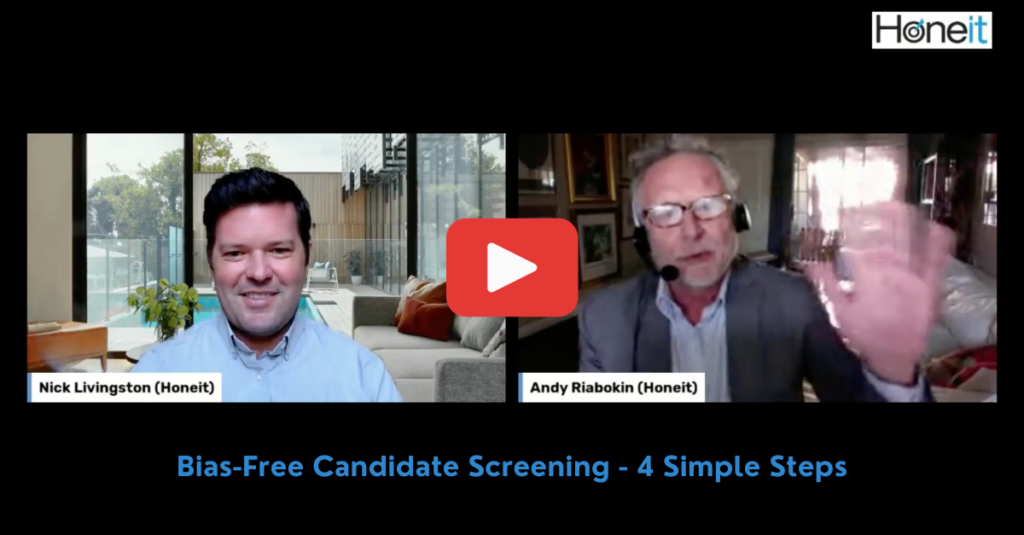Introduction
Watch our 15-minute LinkedIn Live to see the 4 Simple Steps below in action.
In today’s competitive job market, finding the right talent is more critical than ever. However, the process of candidate screening has often been plagued by bias, whether conscious or unconscious. Bias in recruitment can lead to missed opportunities, hinder diversity efforts, and compromise the quality of your hires. To address this challenge, we present four straightforward and actionable steps to achieve bias-free candidate screening.
Step 1: Clear Expectations for Screening Calls
One of the foundational elements of bias-free candidate screening is establishing transparency and consistency in your screening process. This begins by setting clear expectations and agendas for every candidate interaction.
- Clearly define the purpose of each call or interview.
- Share the agenda with the candidate in advance to ensure alignment.
- Provide guidelines for what candidates can expect during the interaction.
By creating a structured and transparent environment, you set the stage for an equitable evaluation process.
Step 2: Use Consistent, Job-Specific Questions
A fair and structured screening process relies on consistent evaluation criteria. To achieve this, ask every candidate the same key questions directly tied to the job description.
- Develop a set of standardized questions tailored to the role.
- Ensure that these questions are unbiased and directly related to job requirements.
- Use a scoring system to evaluate candidate responses objectively.
By asking uniform questions, you minimize the potential for bias and make it easier to compare candidates objectively.
Step 3: Objective Documentation of Candidate Responses
To further reduce bias, it’s crucial to capture the candidate’s answers accurately and objectively. This step eliminates the need for recruiters to rely on their subjective interpretations of what was said.
- Use technology to record and transcribe candidate responses.
- Avoid interjecting personal opinions or interpretations during the conversation.
- Encourage recruiters to focus on active listening and note-taking instead.
By maintaining a factual and objective record of the conversation, you ensure that the candidate is evaluated based on their actual responses.
Step 4: Click the “Bias Button” for Instant Objectivity
In today’s digital age, technology offers innovative solutions to mitigate bias. The Honeit “Bias Button” is one such tool that can instantly remove identifying information, such as names, resumes, photos, and potentially biased keywords, from call summaries.
- Implement technology that offers the “Bias Button” feature.
- Train your team on its effective use.
- Regularly review and update the tool to ensure it addresses potential sources of bias.
The “Bias Button” ensures that candidates are evaluated solely on their qualifications rather than any identifying factors that may introduce bias.
The Takeaway
By following these four simple and actionable steps, you can transform your candidate screening process into a compliant, structured, fair, and bias-free experience. Embracing these practices not only helps your organization attract diverse talent but also ensures that hiring decisions are made based on merit and qualifications, ultimately leading to stronger, more inclusive teams. In an era where diversity and inclusivity are valued more than ever, these steps are crucial in shaping a fair and equitable recruitment process.
Resources:
- See how you can reduce bias in 4 Simple Steps. Watch our 15-minute LinkedIn video here!
- ? Learn more about the Honeit Bias Button


